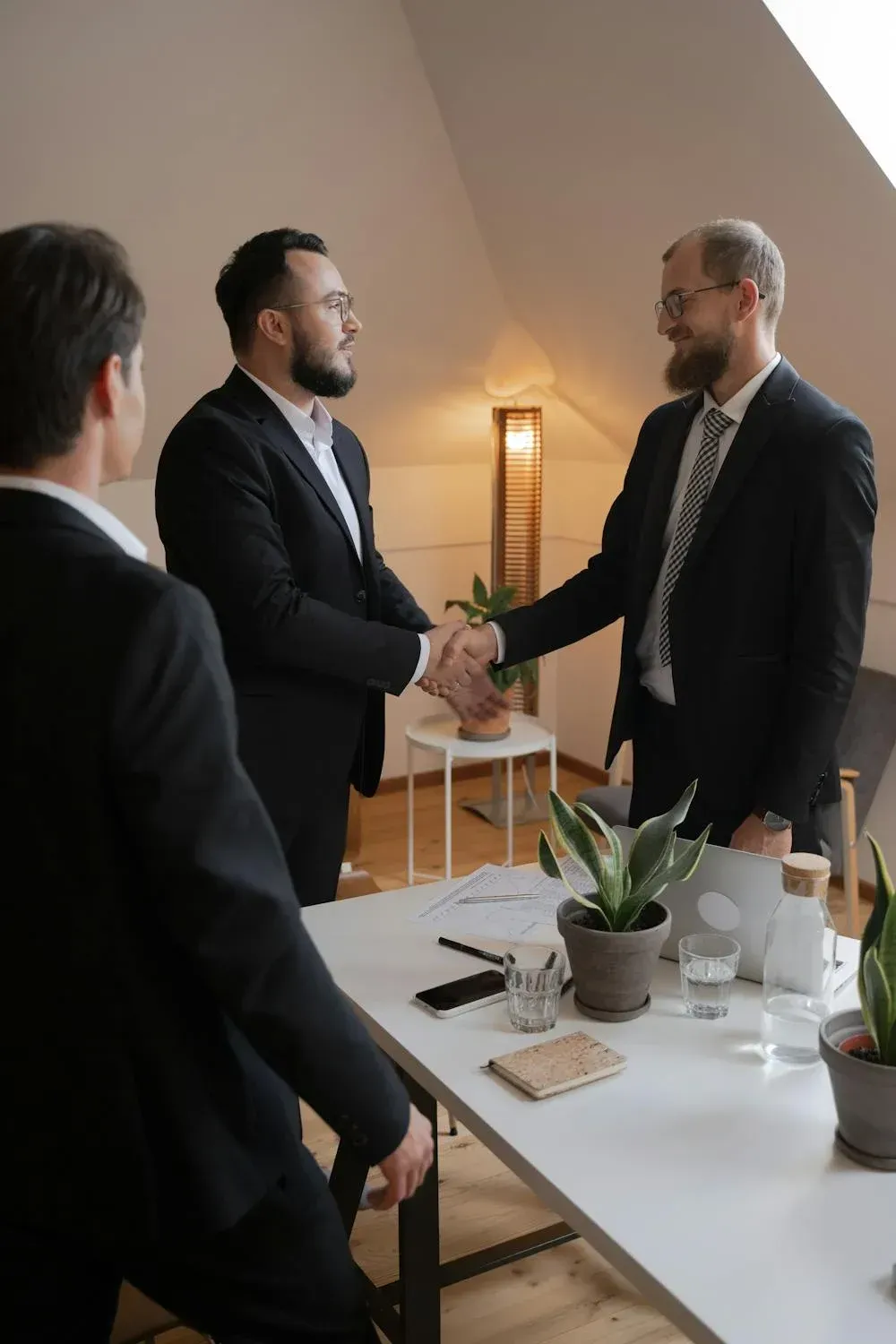Time to read: 7 minutes
From Owner to Employee-Owned: A Real Atlanta Construction Company's ESOP Journey
When Jay Wicklund started thinking about his exit strategy from Trident Construction Group, he faced the same challenge that keeps many construction owners awake at night. After building a successful commercial contracting business in Atlanta for over a decade, he had to figure out what came next. His kids weren't interested in taking over the family business, and selling to competitors felt like watching everything he'd built get dismantled.
That's when Jay discovered employee ownership through an ESOP, and it changed everything.
Starting from Scratch: Building Something Worth Keeping
Trident Construction Group launched in January 2013 with Jay at the helm, focusing on what he knew best: commercial construction. The company found its sweet spot working with major Atlanta healthcare systems like Northside, Piedmont, and Wellstar, while also taking on office buildings, restaurants, and hospitality projects.
By the time Jay started seriously thinking about succession planning, Trident had grown to 42 employees and established solid relationships throughout the Atlanta market. But like many successful construction owners, Jay found himself stuck between limited options.
"There really isn't a robust market for selling general contracting businesses," Jay explains. Unlike specialized trades that might attract buyers for their unique capabilities, general contractors often struggle to find interested purchasers who see value beyond the current owner's relationships and expertise.
Why Employee Ownership Made Perfect Sense
Jay's decision to pursue an ESOP wasn't just about solving his exit problem. It was about creating something bigger than himself while taking care of the people who helped build Trident's success.
The timing felt right for several practical reasons. His children had chosen different career paths, so family succession wasn't realistic. Traditional sale options either didn't exist or would likely result in major changes to the company culture and team he'd worked so hard to develop.
But the real appeal of employee ownership came from Jay's military background and leadership philosophy. Drawing from his Navy experience, he believed in the "one team, one effort" approach where everyone understands how their individual contribution impacts collective success.
The ESOP structure gave him a way to put that philosophy into practice.
What Actually Changed After Going Employee-Owned
The results at Trident tell a story that many construction owners find surprising. While revenue stayed relatively flat in the first year after the ESOP transaction, profits actually improved significantly.
This wasn't by accident. With employees now owning pieces of the company, the entire approach to business development shifted. Instead of chasing every opportunity to boost volume, the team started focusing on profitable work that built long-term value.
Project execution improved as well. Employee-owners began thinking strategically about relationships with subcontractors, vendors, and clients. Rather than squeezing every dollar out of individual projects, they started asking whether short-term gains were worth potentially damaging long-term partnerships.
Real Culture Change You Can Measure
The cultural transformation at Trident shows up in practical ways that matter to construction businesses. Client relationships deepened as the company shifted from trying to maximize profit on each project to creating what Jay calls "raving fans" among their clients. This approach has led to more negotiated work and repeat business with major healthcare systems.
Decision-making improved across all levels, with team members now evaluating whether specific conflicts are worth fighting or if collaborative solutions better serve the company's long-term interests and value. Quality and efficiency increased as employee-owners take more ownership of project outcomes, knowing their efforts directly impact their financial future.
The Numbers That Matter to Construction Owners
From a financial perspective, the ESOP solved multiple challenges simultaneously. Trident eliminated federal income taxes by converting to employee ownership, with all those savings staying in the business for growth and debt service.
Jay chose 100% seller financing initially to keep things simple and avoid banking covenants, though the company later refinanced as market conditions improved. For his personal situation, transitioning from pass-through taxation to capital gains treatment provided significant tax advantages.
But the real story is what employee ownership means for the workforce. Conservative projections show that mid-level employees at Trident could accumulate over $1 million in ESOP benefits over 20 years. Combined with 401(k) contributions, total retirement savings could reach $2.5-3 million for long-term employees.
Using Employee Ownership to Build a Stronger Team
Since implementing the ESOP, Trident has grown strategically, adding eight to nine employees including superintendents, project managers, and estimators. The employee ownership structure gives them a significant advantage in recruiting quality people.
Offering equity participation within 18 months of employment, at no cost to new hires, creates a compelling value proposition that competitors can't match. While account balances start small due to transaction debt, Jay expects retention to improve dramatically as account values grow over time.
Lessons for Other Construction Owners
Jay's experience offers practical insights for contractors considering employee ownership. Culture has to be the priority, he emphasizes. The ESOP structure only works if you're committed to developing an ownership mindset throughout the organization. This means defining clear values and consistently reinforcing behaviors that support employee ownership success.
Communication becomes more important, not less, during the early years. Initial account balances look modest compared to the eventual possibilities, so intensive education about long-term wealth building potential is essential. Professional expertise matters as well, since success depends on assembling a team of advisors who understand both ESOPs and construction industry dynamics.
Building Something That Lasts
Today, Trident maintains ongoing relationships with major healthcare systems, often negotiating rather than competing for projects. Their enhanced reputation creates opportunities for continued profitable growth while building substantial wealth for employee-owners.
Jay's story demonstrates that employee ownership offers construction business owners a path to preserve their legacy while rewarding the people who helped create that success. For contractors facing succession challenges, the combination of tax benefits, cultural advantages, and strategic positioning makes ESOPs worth serious consideration.
How to get started
Getting started with an Employee Stock Ownership Plan (ESOP) can transform your contracting business, unlocking potential for growth and ensuring lasting value for everyone involved. At ESOP for Contractors, we understand the intricacies of the process, from assessing your company's current status to designing a tailored ESOP that aligns with your goals.
Our leadership team knows firsthand how to create winning strategies that benefit both owners and team members alike. If you're curious about how an ESOP could enhance your business's future, we invite you to reach out for a free consultation. Let’s explore how we can help you achieve sustainable success together!

Gary Gray, Founder
Book a Free Consultation
Interested in a free consultation for your contracting business? Send us a message - We’re here to help.















